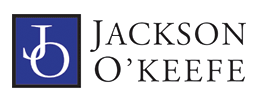The plaintiffs commenced this action seeking underinsured motorist coverage benefits from four insurers, including the…
INSURANCE COVERAGE: Superior Court holds that exclusion for malicious acts not ambiguous

The insurer issued a commercial general liability policy. The insured and its CEO were sued by the CEO’s prior employer for alleged unfair competition, tortious interference, breach of contract, and business disparagement. The coverage issue before the court centered on the business disparagement claim. In that count, it was alleged that false statements were made by the CEO and company against the CEO’s prior employer, and: “At the time these false statements were made, LogicSource and Pannino were motivated by actual malice and knew that the statements were false and untrue, or that such statements were made with reckless and wanton disregard for the truth or falsity of the statements.”
The Superior Court first addressed the following exclusion, which stated that coverage did not apply to “personal and advertising injury caused by or at the direction of the insured with the knowledge that the act would violate the rights of another and would inflict personal and advertising injury.”
Based on the allegations of the Complaint, the court concludes that this exclusion does not bar coverage, stating that the Complaint could be “interpreted in a fashion that does not require that LogicSource and Pannino made the statements with the knowledge that the act would violate the rights of another and would inflict personal and advertising injury.” The court noted that the trier of fact could “disbelieve that the insureds intentionally made false statements as alleged in paragraph 73, but may find LogicSource and Pannino liable because, while motivated by actual malice, they made statements with reckless and wanton disregard for the truth or falsity of the statement.” The court concluded that the Complaint could “thus impose a liability on the insureds that does not require a level of scienter as to the violation of the rights of another rising to the level of knowledge, but may impose liability based on conduct inspired by ill will and a reckless disregard of whether another’s rights will be injured.”
Second, the court addressed an exclusion barring coverage for “any act committed by the insured with malice.” The court rejected two arguments that this exclusion was ambiguous. First, the court rejected the claim that an ambiguity was created as to the applicability of the exclusion based upon the exclusion’s location in a section of the policy with the heading “Infringement of Copyright, Patent, Trademark or Trade Secret”. Following Connecticut Supreme Court and Connecticut District Court cases, the court holds that the placement of an exclusion in a section “containing exclusions of a different nature” does not render an otherwise clear exclusion ambiguous. To conclude otherwise, the court states, would be to elevate “form over substance”.
Second, the court rejects the claim that the exclusion is rendered ambiguous by its conflict with another provision of the policy that expressly provided for coverage with regard to malicious prosecution. The argument was that such a broad application of the malice exclusion would be irreconcilable with the policy’s express grant of coverage for malicious prosecution and, therefore, that the exclusion should be read out of the policy. Following a Connecticut Supreme Court case, the Superior Court reasons that since there was no claim for malicious prosecution in the case before it, the claim of ambiguity is an abstract claim and could not provide a basis for avoiding the otherwise clear policy language. Since there was no dispute that the exclusion in the case at bar, if applied by its plain language, would bar coverage for the claim under the policy, the court grants the insurer’s motion for summary judgment.
OneBeacon America Ins. Co. v. Hanover Ins. Co., 2016 WL 4200237 (Conn.Super. Noble, J.)(July 5, 2016)



